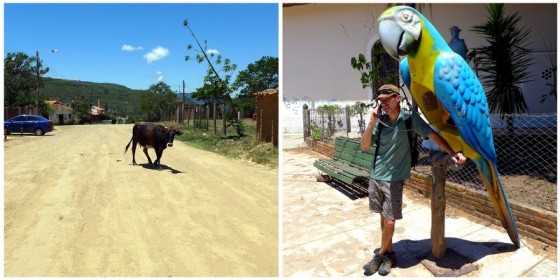
Heading inland from Brazil’s littoral, I happily landed in the former diamond-mining town of Lençois, so-named for the miners’ crude tent camps that resembled lençois (sheets) from afar. In the late 1800’s richness came to this area in Brazil in spite of its relatively poor-quality gemstones. The cloudy diamonds were sold to the French who needed them to help dig the Panama Canal, the London Underground and other fin de siècle tunnel projects in Europe.
When mining ended a few decades ago and the Chapada Diamantina National Park was established, Lençois turned to tourism. Crumbling colonial homes and buildings were renovated, cobblestone streets and plazas spiffed up, tour operators opened shop. The result is a delicate balance of between reserved locals who still follow caipira (i.e. rural) traditions and eco-tourists who flock to the town in search of the great outdoors.

Lençois is perfectly suited for independent travelers. With good accommodation, a steady stream of backpackers for companionship, and excellent dining at the many outdoor eateries – it’s touristy yet low key. I found Lençois to be the perfect place to spend a few days hiking and taking in its many outstanding features.
Trek to Cachoeira da Fumaça
Eager to stretch my legs after many days lounging on the beach, I booked a hike to Brazil’s highest waterfall, Cachoiera da Fumaça (Smokestack Waterfall), through one of the tour agencies. Three chatty Brazilians from São Paulo were my companions as we climbed the windswept canyon in Vale do Capão (they later posted this about our day – big ups to my fellow travel bloggers!)
Cachoeira da Fumaça is unusual in that the waterfall does not reach its base. Rather the water is blown back over the top and evaporates – giving it the appearance of a smoking chimney. This is due to the 420 meter (1400 feet) drop, strong upwinds from the canyon, and the small river which feeds the waterfall.
It’s a wonderful spectacle and hard to give it justice in words so I’ve created the short video below.









